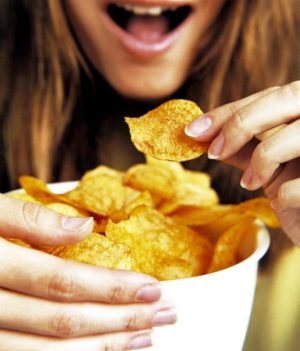
Go easy on those chips.
Scientists suggested a link between cancer and “ultra-processed” foods such as cookies, fizzy drinks and sugary cereals, though outside experts cautioned against reading too much into the study results.
Researchers from France and Brazil used data from nearly 105,000 French adults who completed online questionnaires detailing their intake of 3,300 different food items.
This was compared to cases of diagnosed cancer among the group.
“The results show that a 10-percent increase in the proportion of ultra-processed foods in the diet was associated with increases of 12 percent in the risk of overall cancer and 11 percent in the risk of breast cancer,” said a press statement from The BMJ which published the research.
No significant association was found for prostate or colorectal cancer.
Foods on the list included packaged breads, buns, pizzas and cakes, crisps, industrially-produced desserts, sodas, fish and chicken nuggets, instant noodles and soups, and frozen ready meals.
Previous research had linked processed foods high in sugar, fat, and salt to obesity, high blood pressure and high cholesterol, but firm evidence for increased disease risk has been “scarce,” the team said.
They stressed their research showed no more than a correlation between a diet high in ultra-processed foods and cancer.
This could be coincidental, and does not prove conclusively that these types of food actively cause cancer.
Ian Johnson, a nutrition researcher from the Quadram Institute Bioscience in England, said the authors identified “some rather weak associations, of low statistical significance.”
“The problem is that the definition of ultra-processed foods they have used is so broad and poorly defined that it is impossible to decide
exactly what, if any, causal connections have been observed,” he said in comments via the Science Media Centre.
Tom Sanders of the King’s College London agreed that the term “ultra-processed food” was “difficult to define.”
“The definition excludes many home-made or artisanal foods such as bread, cakes, biscuits, butter, meat, cheese, tinned fruit and vegetables as well as sugar and salt used in domestic food preparation,” he said.
“From a nutritional standpoint, this classification seems arbitrary and based on the premise that food produced industrially has a different nutritional and chemical composition from that produced in the home or by artisans. This is not the case.”